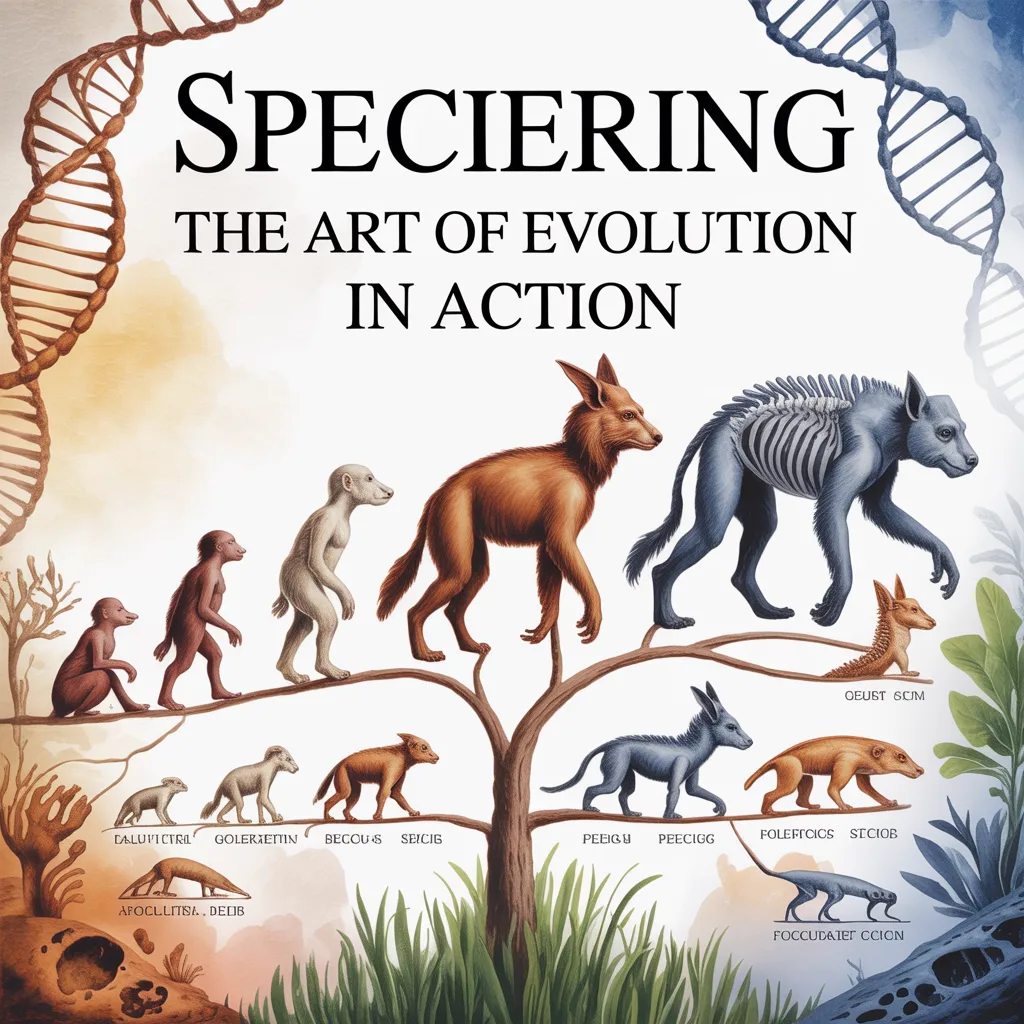
Speciering
Life on Earth is a masterpiece painted by evolution — a process of endless creativity, change, and adaptation. Among the many forces shaping this grand story, speciering stands as one of the most remarkable. The term “speciering” refers to the process of speciation, the formation of new and distinct species over time. It is through this mechanism that the incredible diversity of plants, animals, fungi, and microorganisms has emerged across millions of years.
From finches on the Galápagos Islands to the split of wolves and dogs, speciering is the biological bridge between one form of life and another. Understanding it helps us trace the tree of life, revealing how species evolve, adapt, and sometimes even vanish — all under the constant influence of natural selection and environmental change.
What Is Speciering?
At its simplest, speciering is the process by which one species evolves into two or more separate species. This transformation doesn’t happen overnight. It often takes thousands—or even millions—of years of gradual genetic change. Over time, populations of the same species become so different that they can no longer interbreed successfully, marking the birth of entirely new species.
Speciering lies at the heart of evolution. Without it, all living organisms would remain static, unable to adapt to changing conditions. The process ensures that life continues to diversify, filling every possible ecological niche — from deep ocean vents to mountaintop glaciers.
The Core Mechanism: How Speciering Happens
Speciering can occur in several ways, depending on how populations become isolated and evolve. The three most common types are allopatric, sympatric, and parapatric speciation.
1. Allopatric Speciering
Allopatric speciering, or geographical speciation, occurs when populations of a species are physically separated by barriers such as mountains, rivers, or oceans. Once isolated, these populations experience different environmental pressures, leading to genetic divergence.
For example, when a river changes course and divides a population of frogs, each group adapts to its new environment. Over time, genetic differences accumulate to the point that they can no longer interbreed, even if the barrier disappears.
Classic example: Charles Darwin’s Galápagos finches — each island population evolved unique beak shapes and feeding behaviors suited to different ecological conditions.
2. Sympatric Speciering
Sympatric speciering occurs without physical separation. Instead, reproductive barriers develop within a single population due to genetic, behavioral, or ecological differences.
For instance, in some insect species, certain individuals may start preferring different host plants to lay their eggs. Over generations, these preferences can lead to mating isolation, as individuals interact only with those sharing their same preferences.
Classic example: Apple maggot flies, which diverged into two populations based on whether they infested apples or hawthorns.
3. Parapatric Speciering
Parapatric speciering happens when two populations live adjacent to each other but experience different environmental conditions along a gradient. While they remain in partial contact, selective pressures at the extremes cause divergence.
Example: Grass species growing near mine tailings have evolved heavy-metal tolerance, while neighboring grass populations outside these toxic zones remain sensitive, creating a boundary between distinct groups.
Genetic Isolation: The Point of No Return
The key to speciering is reproductive isolation — when two groups can no longer produce fertile offspring together. This isolation can occur before fertilization (prezygotic isolation) or after (postzygotic isolation).
Prezygotic barriers include:
-
Behavioral isolation — differences in mating calls or rituals.
-
Temporal isolation — species breeding at different times or seasons.
-
Mechanical isolation — mismatched reproductive organs or structures.
-
Ecological isolation — occupying different habitats within the same area.
Postzygotic barriers occur when hybrid offspring are inviable or sterile, like the mule (a sterile hybrid of a horse and a donkey). Once these barriers solidify, speciering is effectively complete — the populations have become distinct species.
The Role of Natural Selection and Mutation
Speciering is powered by genetic variation, which arises through mutations, gene recombination, and migration. Natural selection acts upon these variations, favoring traits that offer survival or reproductive advantages in a given environment.
As selective pressures differ between populations, so do the traits that are favored. Over time, these differences accumulate, shaping unique adaptations that distinguish one group from another.
However, natural selection isn’t the only force at play. Genetic drift — random changes in allele frequencies — can also drive speciering, particularly in small, isolated populations. These random shifts may fix certain traits purely by chance, accelerating divergence.
Human Influence on Speciering
Interestingly, humans play both a constructive and destructive role in modern speciering. On one hand, human activity causes habitat fragmentation, isolating populations and inadvertently promoting speciation in some cases. For instance, species in fragmented rainforests or islands of urban greenery may diverge genetically over time.
On the other hand, pollution, deforestation, and climate change are causing mass extinctions that halt potential speciering processes before they begin. Modern conservation biology increasingly recognizes the importance of preserving not just existing species but also the evolutionary processes that generate new ones.
Humans have even directly induced speciering through domestication. Dogs, cats, and crops like wheat and maize all arose from ancestral species shaped by human-driven selection. Artificial selection mirrors natural evolution but at an accelerated, intentional pace.
Speciering in Action: Real-World Examples
-
Darwin’s Finches
These iconic birds from the Galápagos Islands showcase adaptive radiation — a rapid burst of speciering from a common ancestor. Each finch species evolved unique beaks for different feeding habits. -
Cichlid Fish in African Lakes
In Lakes Malawi and Victoria, hundreds of cichlid species have evolved in just a few thousand years. Variations in color, diet, and mating preferences have fueled rapid sympatric speciation. -
The London Underground Mosquito
A unique mosquito species evolved in London’s subway system, genetically distinct from its above-ground relatives due to environmental isolation. -
Ring Species
Ring species, such as the Ensatina salamanders in California, show continuous populations that can interbreed with neighboring groups — but the terminal populations at the ends of the “ring” cannot interbreed, illustrating speciering in progress.
The Broader Impact of Speciering
Speciering is more than just a biological curiosity; it shapes the entire web of life. Each new species adds complexity, stability, and adaptability to ecosystems. The process ensures that life can respond dynamically to environmental changes, maintaining biodiversity.
Understanding speciering also helps scientists trace the evolutionary history of organisms, develop conservation strategies, and even predict how species might adapt—or fail to adapt—to global changes.
In biotechnology and medicine, studying speciation helps researchers understand how pathogens evolve into new strains, informing vaccine development and disease control.
The Continuing Evolutionary Story
Speciering is not a relic of the past — it’s an ongoing process happening all around us. From microbes adapting to antibiotics to plants adjusting to urban pollution, new species are emerging even today.
The beauty of speciering lies in its continuity. It tells us that life is never static; it’s always experimenting, always changing. Every new species is both a product of its ancestors and a foundation for future evolution.
Conclusion
Speciering is the heartbeat of evolution — the process that keeps life diverse, resilient, and ever-changing. Through it, the natural world renews itself, branching into endless forms most beautiful, as Darwin once described.
By studying and protecting the conditions that allow speciering to flourish, we not only preserve biodiversity but also celebrate the creativity of nature itself. Evolution is not just history — it’s a living, breathing phenomenon, and speciering is its most powerful brushstroke.





